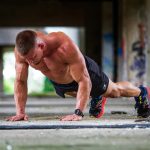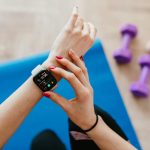exercise equipment in home: Powerful, Quiet Indoor Cycling for Real‑Life Fat Loss and Daily Energy
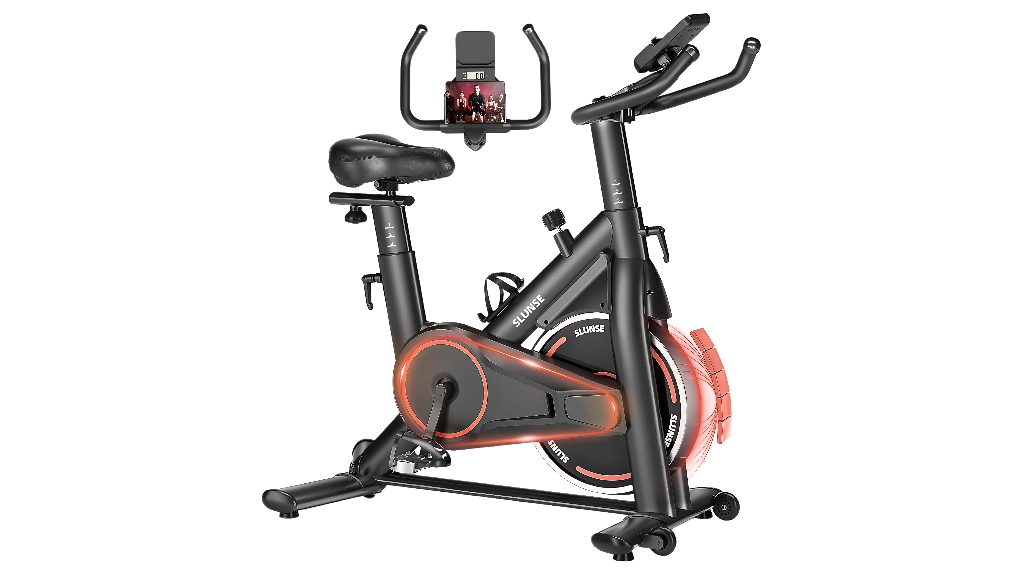
exercise equipment in home: Powerful, Quiet Indoor Cycling for Real‑Life Fat Loss and Daily Energy.
When life gets busy, exercise equipment in home that is quiet, comfortable, and easy to use is the difference between wishful thinking and real, weekly progress. This guide shows exactly how an adjustable magnetic resistance exercise bike—with app sync, digital monitor, comfortable seat, phone mount, and 350 lb weight capacity—turns a small corner of the living room into a dependable, results‑driven home gym.
The real problem home workouts must solve
Most people don’t lack motivation; they lack a smooth path that fits real life—limited time, shared spaces, and neighbors who prefer silence over thumping cardio. A quiet, low‑maintenance exercise bike is exercise equipment in home designed to remove friction: quick to start, simple to progress, and gentle on joints. That means fewer barriers, better adherence, and more consistent calorie burn without scheduling the day around the gym.
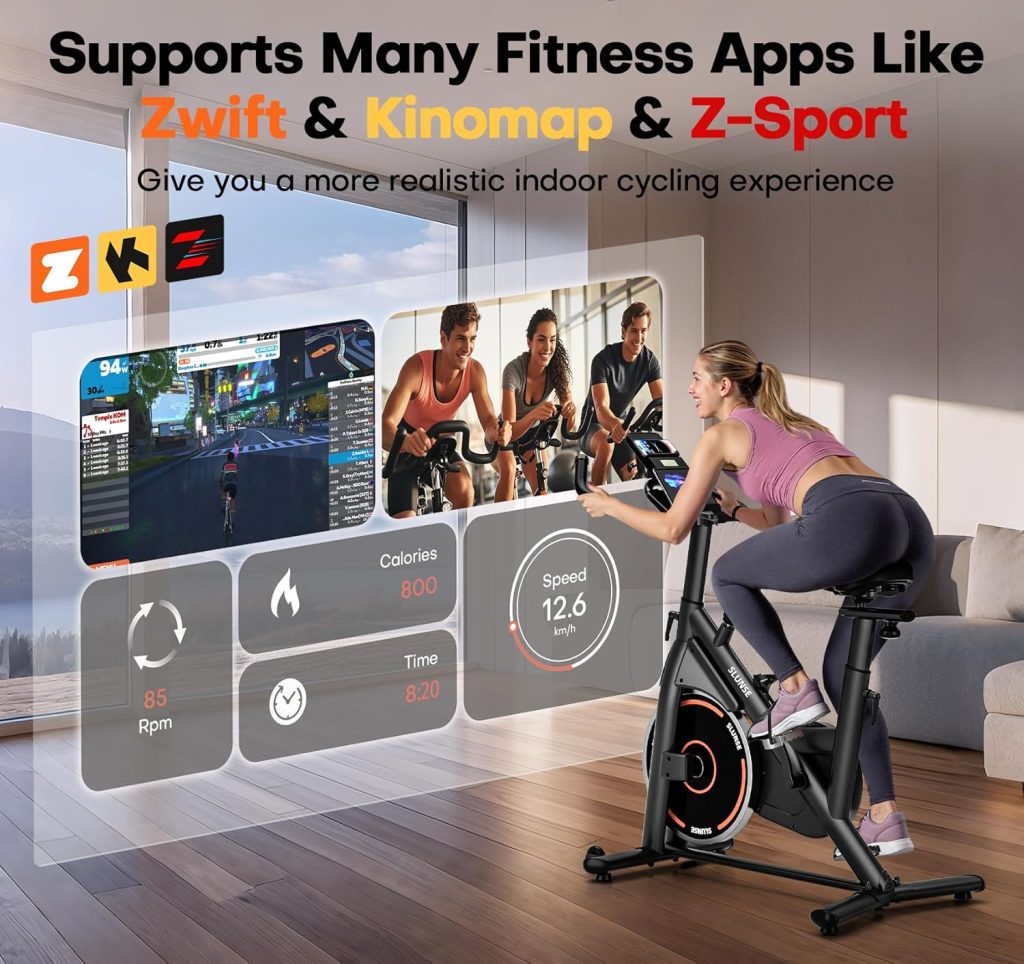
Why a magnetic exercise bike stands out
Magnetic resistance keeps friction off the flywheel, so rides are whisper‑quiet—perfect for apartments, shared homes, and late‑night sessions. As exercise equipment in home, that matters: exercise happens when it fits the day, not only when the room is empty. The 350 lb capacity enhances stability for a wider range of riders, the digital monitor keeps metrics visible (speed, time, distance, cadence, estimated calories), and the phone mount makes entertainment, coaching apps, and music effortless. App compatibility unlocks guided programs, cadence targets, heart‑rate zones (with compatible sensors), virtual rides, and structured HIIT workouts that transform exercise equipment in home into an interactive trainer.
What this bike does exceptionally well
Quiet, low‑impact cardio
- Magnetic resistance means no brake pads and minimal noise, so exercise equipment in home stays neighbor‑friendly while delivering steady‑state cardio or interval work.
- The flywheel plus micro‑adjustable resistance provides smooth ramps from easy spin to leg‑burning climbs, keeping training progressive and joint‑friendly.
Built for comfort and consistency
- A comfortable, height‑adjustable saddle and multi‑position handlebars support different torso lengths and preferred riding postures.
- The 350 lb weight capacity and wide base stabilize the frame, helping exercise equipment in home feel safer at higher cadence or during out‑of‑saddle efforts.
App‑guided structure (without a monthly contract required)
- Pair the bike with popular training apps to follow cadence‑based intervals, heart‑rate zones, and progressive programs.
- Use the digital monitor plus phone mount for a “second screen” experience: metrics at a glance while streaming music, classes, or scenic rides.
Who benefits most from this exercise equipment in home
Beginners starting a routine
- Gentle on knees, hips, and back, stationary cycling teaches pacing without high impact or complex technique.
- The bike’s quiet operation encourages short “micro‑sessions” (10–15 minutes) that add up across the week.
Busy professionals and parents
- Zero commute, instant start: a 20‑minute interval ride during a meeting gap or nap time becomes a realistic, repeatable habit.
- App cues + visible metrics turn short rides into focused, productive workouts.
Cardio with strength on the side
- Pair rides with quick dumbbell or bodyweight circuits to protect lean mass while using exercise equipment in home for calorie burn and heart health.
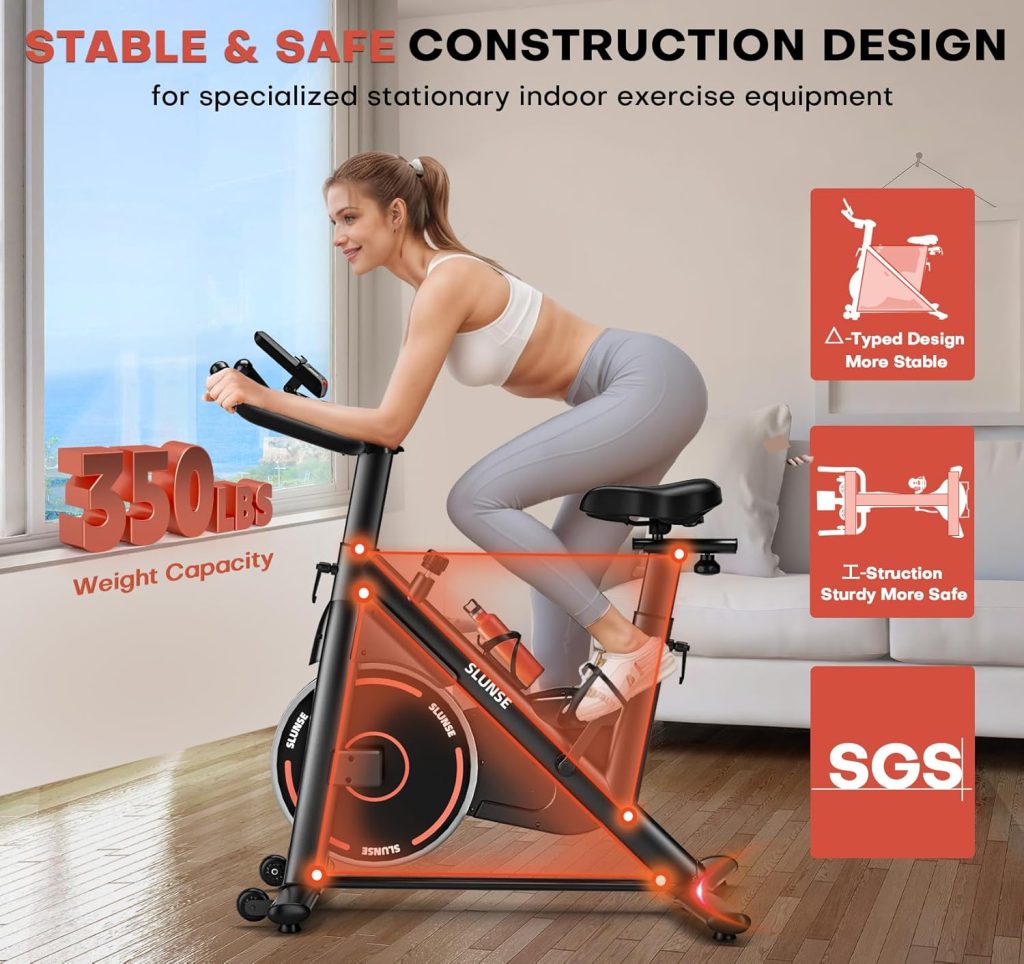
Setup guide: get the fit right on day one
Seat height
- Stand beside the bike and set the saddle roughly at hip height; on the bike, the knee should have a slight bend (~25–35 degrees) at the bottom of the pedal stroke.
- Too low? Knees and thighs may feel cramped. Too high? Hips rock side to side. Small adjustments matter.
Fore‑aft saddle position
- When the pedal is at 3 o’clock, the forward knee should align roughly above the ball of the foot.
- Slide the seat forward or backward to reduce knee strain and support neutral posture.
Handlebar height
- Start higher for comfort and lower gently over weeks if seeking a sportier position. Comfort first—consistency beats aggressiveness.
How to use this exercise equipment in home three ways
1) Easy base rides (steady state)
- Goal: build aerobic fitness and daily energy.
- Structure: 20–40 minutes at a conversational pace, cadence 80–95 RPM, light‑to‑moderate resistance.
- Progression: add 2–5 minutes per ride or a small resistance bump each week.
2) Time‑efficient interval training (HIIT)
- Goal: burn more calories in less time while improving VO2 and leg power.
- Structure: 10‑minute warm‑up; then 10–12 rounds of 40 seconds hard / 80 seconds easy; finish with 5–10 minutes cool down.
- Progression: extend work intervals to 45–60 seconds or shorten recovery by 10–20 seconds every 1–2 weeks.
3) Threshold and tempo (performance focus)
- Goal: improve lactate threshold for stronger sustained efforts.
- Structure: 3 x 8 minutes at “comfortably hard” (talking broken into short phrases), 3 minutes easy spin between sets.
- Progression: add one more 8‑minute block every 2–3 weeks or increase resistance slightly to hold the same cadence.
A 6‑week progressive plan (no gym needed)
Weeks 1–2: Build the habit
- 3 rides per week:
- Ride A: 25 min steady (light‑moderate).
- Ride B: 8 x 30s fast cadence / 60s easy (after 10 min warm‑up).
- Ride C: 30–35 min steady with 3 x 1 min “pushes” sprinkled in.
Weeks 3–4: Turn up the signal
- 4 rides per week:
- Ride A: 30–35 min steady (moderate).
- Ride B: 10 x 40s hard / 80s easy.
- Ride C: 3 x 8 min tempo / 3 min easy.
- Ride D: 20–25 min recovery spin (very easy).
Weeks 5–6: Consolidate and personalize
- 4 rides per week:
- Ride A: 35–45 min steady (moderate).
- Ride B: 12 x 40s hard / 60–80s easy.
- Ride C: 4 x 8 min tempo / 3 min easy.
- Ride D: 20–30 min easy spin + optional core circuit (planks, dead bugs, side planks).
Tip: Keep one “very easy” day to preserve freshness. Success with exercise equipment in home comes from stacking sustainable weeks, not one maximal workout.
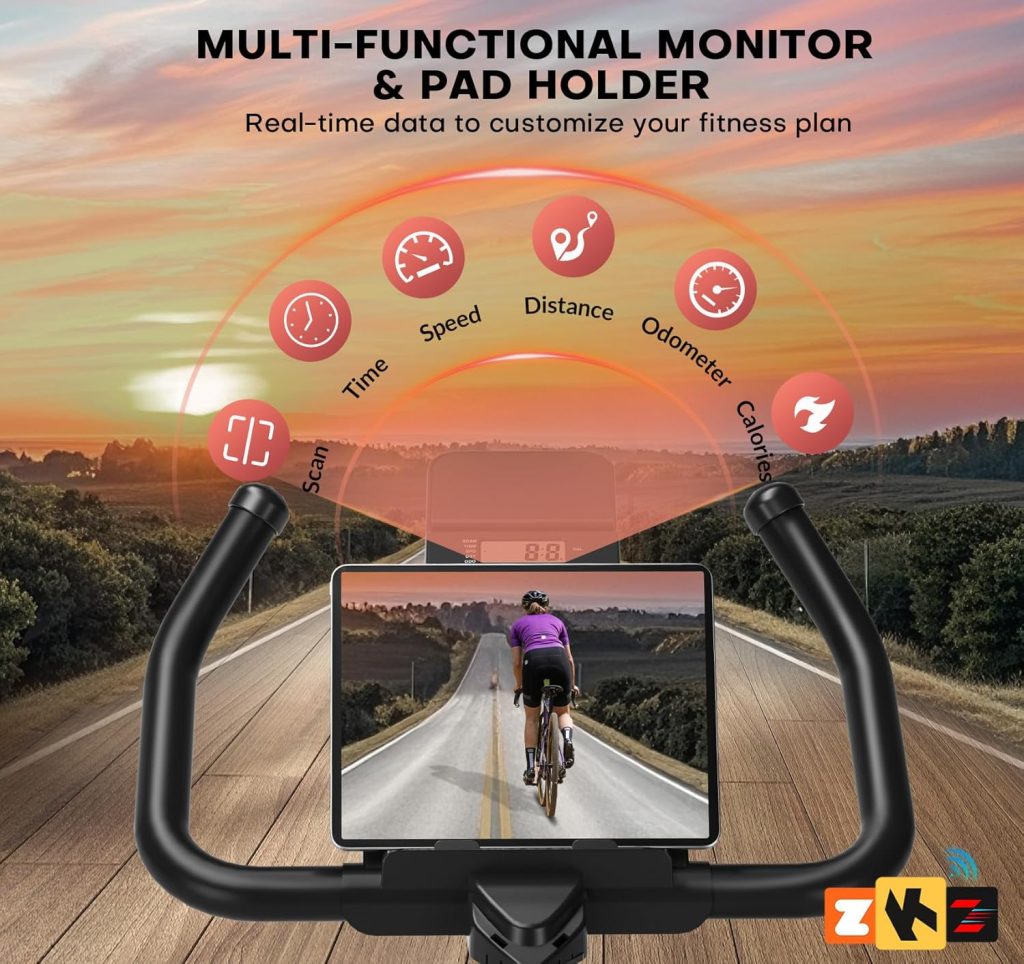
Make metrics meaningful (and fun)
Cadence (RPM)
- Use RPM to hit targets without guessing. For base rides, 80–95 RPM is smooth and efficient; for intervals, 95–110 RPM at higher resistance creates powerful efforts.
Heart rate (if available)
- Zones keep efforts honest. Most steady rides live in moderate zones; intervals nudge into higher zones briefly. If no HR strap, use the talk test and RPE (perceived exertion).
Power proxy
- If the app reports virtual power or resistance levels, track them weekly at the same cadence. If not, log “gear + RPM” for a simple, repeatable benchmark.
Solve the top three barriers to home fitness
Barrier 1: Time and interruptions
- Strategy: “10‑minute starts.” If focus is low or time is tight, commit to 10 minutes; most days, momentum carries you past that point. Exercise equipment in home pays off when starting is easy.
- Strategy: Magnetic resistance + a mat under the base keeps rides whisper‑quiet and reduces floor vibration. Ride early or late without disturbing anyone.
Barrier 3: Boredom and plateaus
- Strategy: Rotate ride types (base, intervals, tempo), chase small weekly targets, and pair the phone mount with music, classes, or virtual routes. Keep novelty high but structure intact.
Comfort checklist for long‑term consistency
- Seat: Use padded shorts or a gel cover during the first weeks; the sit bones adapt over time.
- Hands: Switch grips every few minutes; relax shoulders and keep elbows soft.
- Hydration: Keep a bottle on the frame; sip every 5–10 minutes.
- Cooling: A small fan aimed at the torso makes hard intervals dramatically more comfortable.
- Post‑ride: 3–5 minutes easy spin plus gentle hip flexor and calf stretches reduce tightness.
Product spotlight: app‑compatible magnetic resistance exercise bike (350 lb capacity)
What matters most for exercise equipment in home is how fast it disappears into the routine—stable, silent, and always ready.
- Magnetic resistance: Smooth, near‑silent rides that respect neighbors and sleeping kids.
- App compatible: Pair with coaching apps for cadence targets, virtual routes, and interval structures; the phone mount keeps content where the eyes already are.
- Digital monitor: Time, speed, distance, cadence, and estimated calories at a glance—simple data that guides effort without overwhelming.
- Comfortable seat + adjustable fit: Fine‑tune saddle height, fore‑aft, and handlebar position so posture feels natural from day one.
- 350 lb capacity: Stout frame and wide base help the bike feel planted during sprints or out‑of‑saddle climbs.
- Space‑savvy: A small footprint turns a spare corner into a legitimate home gym anchor.
Why it’s persuasive: this is exercise equipment in home that compresses the barriers to entry. No waiting, no commuting, no noise drama—just consistent sessions that build aerobic fitness, support weight management, and lift daily energy.
Pairing the bike with strength (15‑minute add‑on)
To protect lean mass and joints, add two or three short strength sessions each week after an easy spin warm‑up.
- Day 1: Bodyweight squats, push‑ups or incline push‑ups, plank (2–3 rounds, 8–12 reps).
- Day 2: Split squats, rows (bands or dumbbells), side plank (2–3 rounds).
- Day 3: Hip hinge (Romanian deadlift with dumbbells or bands), overhead press (light dumbbells), dead bug.
This simple companion work turns exercise equipment in home into a full program—heart, lungs, and muscles all covered.
FAQs
Is an indoor cycling bike good for weight loss?
Yes—consistency is king. With exercise equipment in home, short intervals and longer base rides are easy to schedule, helping maintain a sustainable calorie deficit alongside higher‑protein, high‑fiber meals.
How many days per week should I ride?
Start with 3–4 rides weekly. Mix base rides (20–40 minutes) with time‑efficient intervals (15–25 minutes). Add one easy spin for recovery if legs feel heavy.
Will cycling hurt my knees?
Proper bike fit, smooth cadence, and progressive resistance make indoor cycling one of the most joint‑friendly options. If knees ache, raise the saddle a few millimeters, reduce resistance, and keep cadence high.
Do I need clip‑in shoes?
Not required. Flat athletic shoes work well. If rides become frequent and hard, clip‑ins improve pedal efficiency and foot comfort.
What’s the best way to track progress?
Pick two or three benchmarks: longest steady ride, interval count at a given resistance, and resting heart rate over weeks. Small, steady upticks show the program is working.
High‑intent keywords used naturally
stationary bike, indoor cycling bike, magnetic resistance, app compatible, quiet exercise bike, digital monitor, phone mount, weight loss at home, HIIT workouts, low‑impact cardio, cadence training, home gym equipment, best exercise bike for home, fat burning workouts, beginner cardio workout, home workout plan.
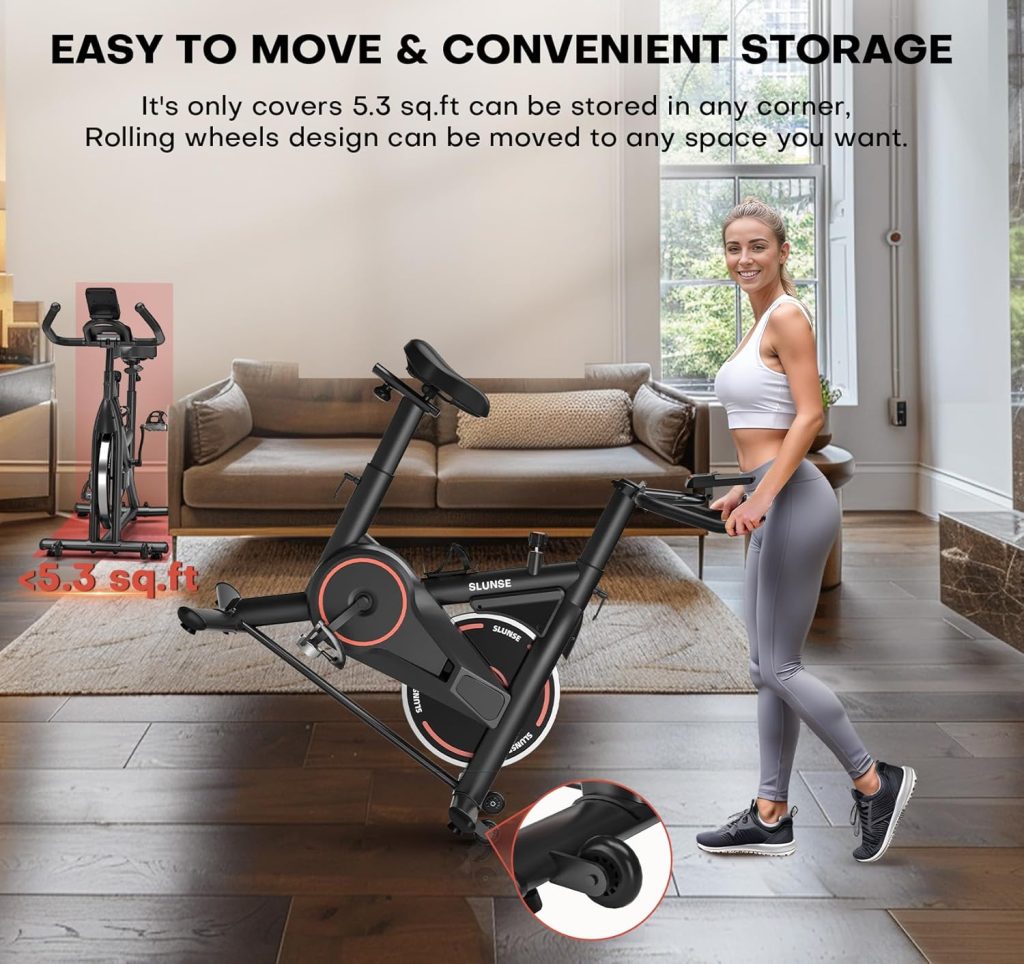
Action plan: ride tonight
- Adjust fit (seat height, fore‑aft, handlebar) for comfort.
- Do 10 minutes easy + 6 x 40s fast / 80s easy + 5 minutes cool down.
- Log cadence, resistance, and how it felt. Repeat in two days and add one interval. Consistency turns exercise equipment in home into daily momentum.
By choosing quiet, adjustable, app‑compatible exercise equipment in home—and giving it a simple, repeatable plan—cardio stops being a negotiation and becomes a reliable part of the day. The result is more energy, better mood, and steady fitness gains without leaving the house.
